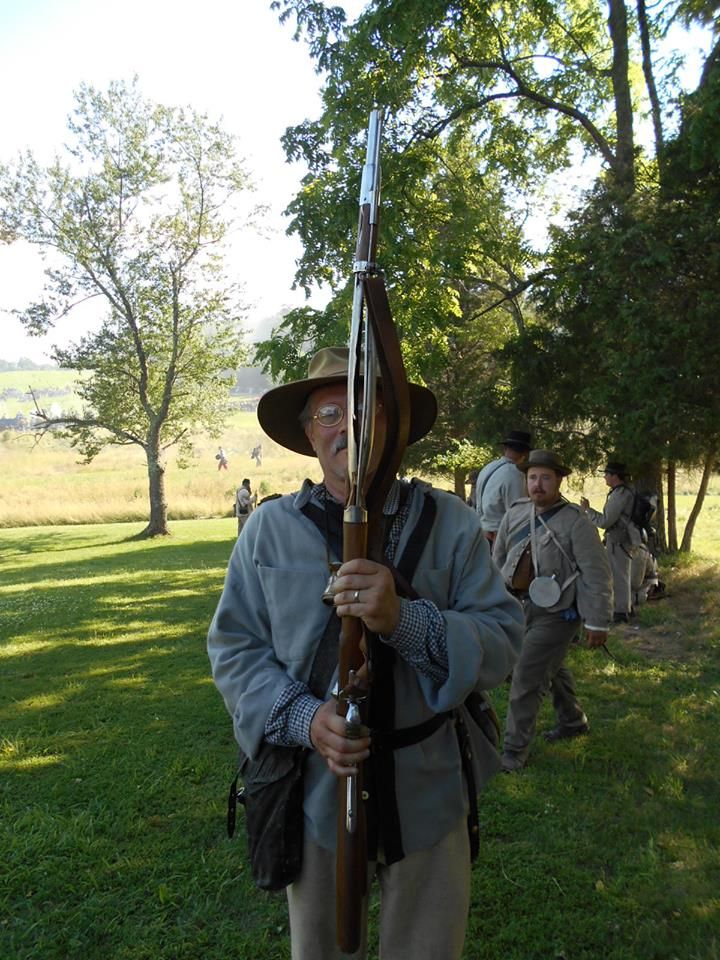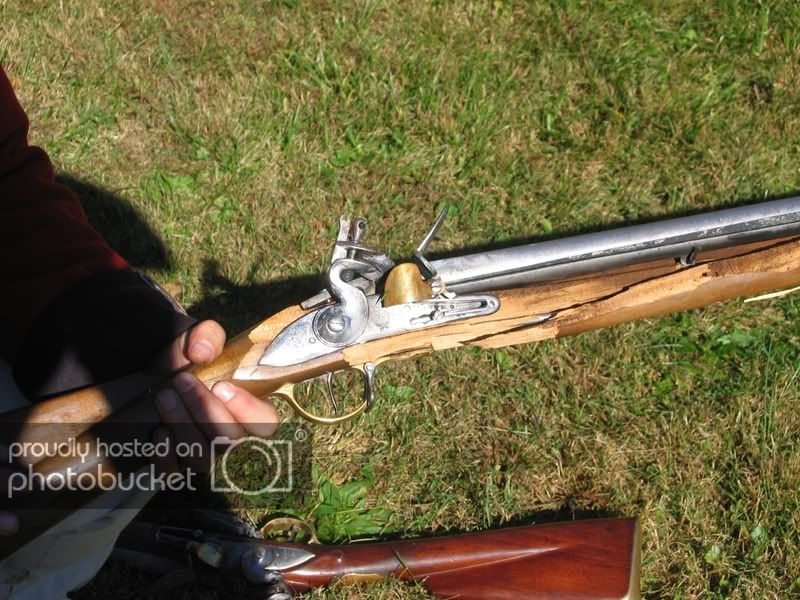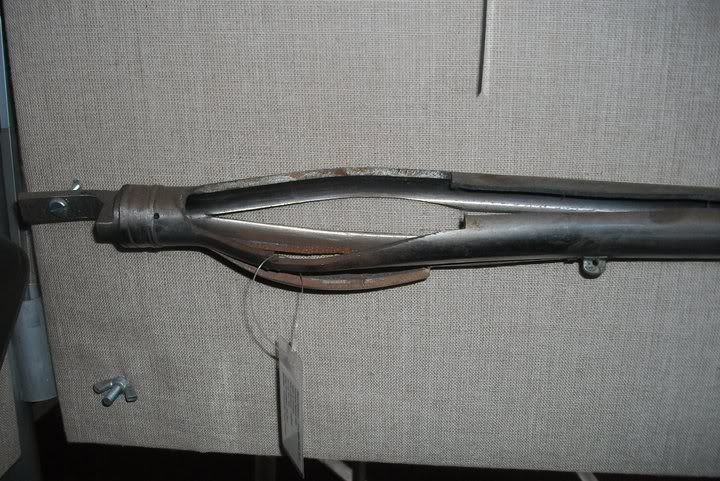............... Then the stock was severely cracked in the breech which made it to the wrist plate, he would have to epoxy that often to keep it together. A well designed musket with a properly tapered large bore barrel will not be super difficult to shoot and the stock should be able to absorb the recoil without breaking in two.
The wrist area of Brown Bess musket stocks is weak, and more than a few Pedersoli's with European walnut stocks crack and break on muskets. The fact that has and does happen to BB muskets used for reenactments and the type of wood, suggests the problem is with how thin the wood in the area is. The chemical structure of glue or epoxies allows for a quick fix, but a better repair is to dowel the glued-up crack or a countersunk screw that is hidden by a dowel rod cap.
English walnut and European walnut are actually the same species, and the difference between them is the result of growth conditions based on the environments of the British Isles versus the region of origin of the species in south eastern Europe and Anatolia.
Indian made copies using teak have thicker wrist areas, and that may be a good thing. Thinner wrists may "up" the chances of that area breaking.
If someone buys or builds their own custom made BB using "English" walnut, using period dimensions with thin wooden stocks, using it for reenacting purposes carries with it the risk of breaking that thin wrist area. If you want to spend the money to have one built for you, or spend the time building your own, do you want to run the risk of having the stock break the way it does on Pedersoli muskets with thicker wood profiles on a modern made take on the BB stock?
Yes, you can then repair the broken wrist area, and with good fortune, you might not see the repair. If you want a new stock, then it's a custom job, and one that can take a hunk of time/money.
The Indian made clunkers are thick, have lots of excess wood. So far, I know of more than a few Pedersolis that have broken and repaired wrists. I'm not hearing about breakage being as big a problem about Indian muskets so far.
IF, and I repeat the word IF, someone wants an Indian musket, don't do it through the mail. Push vendors selling them to go to events where people can actually inspect them, and the transaction is cash and carry based on handling what you intend to buy. If you buy ANYTHING via the internet/mail-order, you don't know what you'll be getting until you open the box.
Consider for yourself, would you rather use a Indian musket for reenacting or a custom made spot on reproduction, and not have to worry about the off chance the wrist doesn't get broken.
For hunting purposes, I don't mind the chance any custom made pieces of gear I have made get broken, damaged, or need repaired. At reenactments, those same custom pieces of yours that aren't cheap to have made, or make, can get damaged by some klutz next who can't secure his musket in an orderly manner and bangs your thin stock and leaves a gouged area. Or, you trip and fall on it, breaking it on your own. Worse yet, you go visit the vendors and return to find the musket is missing. Yes, things get stolen and thieves are going to target higher value items, not a cheaper Indian p.o.s.
There are many things that are a matter of personal choice. What one person wants may not be acceptable to others. I'm not advocating one or the other when it comes to Indian made, Pedersoli/Mirokus, or custom made BBs, Charlevilles, or other smooth bores. It's a matter of individual decisions each person who wants one, must make on their rather than being told "buy X because whoever thinks it is better.







